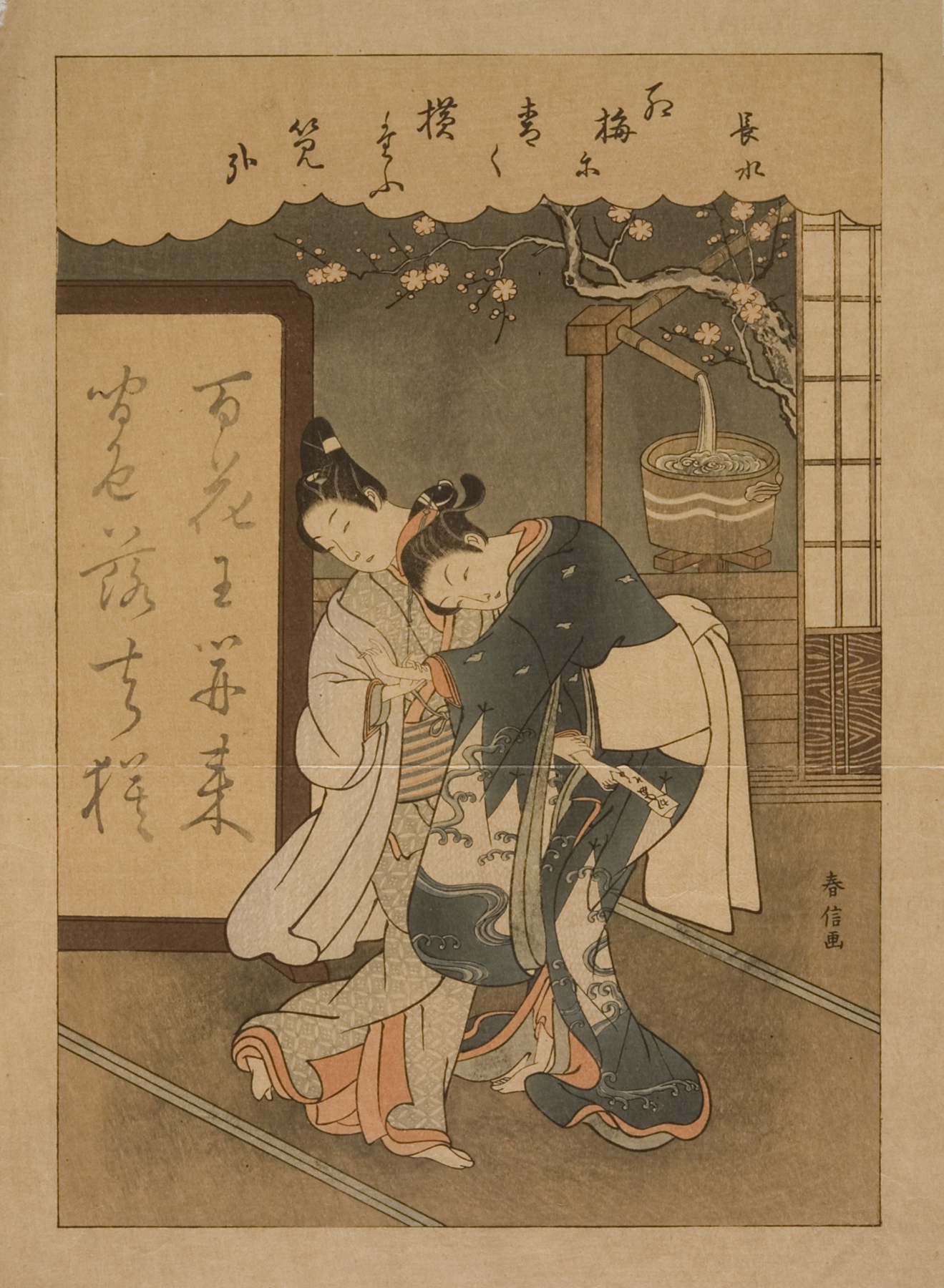couple struggle over love letter, Suzuki Harunobu
Artwork Overview
Suzuki Harunobu, artist
circa 1725–1770
couple struggle over love letter,
late 1800s–early 1900s, Meiji period (1868–1912) or Taisho period (1912–1926)
Where object was made: Japan
Material/technique: color woodcut
Dimensions:
Image Dimensions Height/Width (Height x Width): 282 x 198 mm
Image Dimensions Height/Width (Height x Width): 11 1/8 x 7 13/16 in
Sheet/Paper Dimensions (Height x Width): 350 x 257 mm
Sheet/Paper Dimensions (Height x Width): 13 3/4 x 10 1/8 in
Image Dimensions Height/Width (Height x Width): 282 x 198 mm
Image Dimensions Height/Width (Height x Width): 11 1/8 x 7 13/16 in
Sheet/Paper Dimensions (Height x Width): 350 x 257 mm
Sheet/Paper Dimensions (Height x Width): 13 3/4 x 10 1/8 in
Credit line: Source unknown
Accession number: 0000.2025.09
Not on display
If you wish to reproduce this image, please submit an image request
